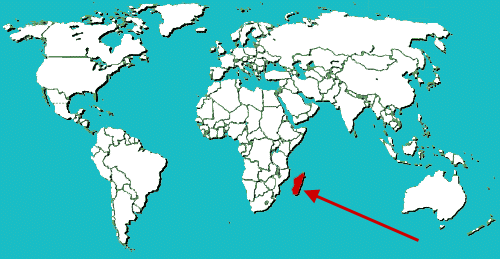
Circle the area on this map

B. Madagascar is in the Indian Ocean off the coast of Southern Africa, east of Mozambique. Health officials are worried because the disease has spread to crowded cities and most of the cases are pneumonic plague, which is spread from person to person. Bubonic plague, transmitted from animals to people through flea bites, occurs almost annually in Madagascar.
A. Bubonic plague often cause gangrene and blackening of the skin on the extremities such as toes, fingers, lips and tip of the nose. Epidemiologists theorize that the medieval plague was spread by rats. Plague now can be treated effectively with antibiotics, but doctors fear the bacterium could develop drug resistance. Drug-resistant forms have been found in Madagascar.
C. The first settlers were ocean-going Austronesian people from the island of Borneo, about 3,700 miles away in Southeast Asia. They were joined about 1,000 AD by Bantu migrants from what is now Mozambique, about 300 miles west of the island. The people of Madagascar speak Malagasy, a language otherwise unique to Southeast Asia and the Pacific.
D. Madagascar split from the Indian peninsula around 88 million years ago, allowing native plants and animals to evolve in relative isolation. More than 90% of its wildlife is unique to the island